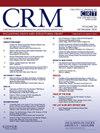采用多模式方法预测接受瓣中瓣经导管主动脉瓣植入术患者的假体与患者不匹配情况。
IF 1.6
Q3 CARDIAC & CARDIOVASCULAR SYSTEMS
引用次数: 0
摘要
目的:瓣膜腔内经导管主动脉瓣植入术(VIV-TAVI)是治疗退行性主动脉生物假体的一种新兴手术,VIV-TAVI术后患者与假体不匹配(PPM)的发生可能会影响其临床疗效。本研究旨在测试在TAVI计划阶段预测PPM风险的多模态成像方法,并评估其在VIV-TAVI手术中的临床预测性:方法:筛选6年来在我院接受VIV-TAVI手术的连续患者,并选择接受自扩张瓣膜治疗的患者。有效孔面积(EOA)通过结合超声心动图数据和有创血流动力学评估的混合Gorlin方程计算得出。根据最初的多模态评估,EOAi≤0.65 cm2/m2(如果体重指数为 2)或 2/m2(如果体重指数≥ 30 kg/m2)定义为重度 PPM。主要终点是临床随访期间全因死亡率和瓣膜相关再住院率的综合:共有40例VIV-TAVI纳入分析。根据预先指定的多模态成像评估,18 名患者(45.0%)有严重的 PPM。在所有基线临床和解剖特征中,VIV-TAVI 术前估计肾小球滤过率(OR 0.872,95%CI[0.765-0.994],p = 0.040)、超声心动图术前≥中度 AR(OR 0.023,95%CI[0.001-0.964],p = 0.048)、MSCT 导出的有效内部面积(OR 0.958,95%CI[0.919-0.999],p = 0.046)和植入深度(OR 2.050,95%CI[1.028-4.086],p = 0.041)在多变量逻辑分析中成为严重 PPM 的独立预测因子。在平均 630 天的随访中,严重 PPM 患者的主要终点发生率更高(9.1%vs.44.4%; p = 0.023):结论:在使用自扩张瓣上瓣的VIV-TAVI手术中,多模态成像方法可能会改善预测严重PPM发生的临床结果。本文章由计算机程序翻译,如有差异,请以英文原文为准。

A multimodal approach to predict prosthesis-patient mismatch in patients undergoing valve-in-valve trans-catheter aortic valve implantation
Aims
The valve-in-valve transcatheter-aortic-valve-implantation (VIV-TAVI) represents an emerging procedure for the treatment of degenerated aortic bio-prostheses, and the occurrence of patient-prosthesis mismatch (PPM) after VIV-TAVI might affect its clinical efficacy. This study aimed to test a multimodal imaging approach to predict PPM risk during the TAVI planning phase and assess its clinical predictivity in VIV-TAVI procedures.
Methods
Consecutive patients undergoing VIV-TAVI procedures at our Institution over 6 years were screened and those treated by self-expandable supra-annular valves were selected. The effective orifice area (EOA) was calculated with a hybrid Gorlin equation combining echocardiographic data with invasive hemodynamic assessment. Severe PPM was defined according to such original multimodality assessment as EOAi≤0.65 cm2/m2 (if BMI < 30 kg/m2) or < 0.55 cm2/m2 (if BMI ≥ 30 kg/m2). The primary endpoint was a composite of all-cause mortality and valve-related re-hospitalization during the clinical follow-up.
Results
A total of 40 VIV-TAVI was included in the analysis. According to the pre-specified multimodal imaging modality assessment, 18 patients (45.0 %) had severe PPM. Among all baseline clinical and anatomical characteristics, estimated glomerular filtration rate before VIV-TAVI (OR 0.872, 95%CI[0.765–0.994],p = 0.040), the echocardiographic pre-procedural ≥moderate AR (OR 0.023, 95%CI[0.001–0.964],p = 0.048), the MSCT-derived effective internal area (OR 0.958, 95%CI[0.919–0.999],p = 0.046) and the implantation depth (OR 2.050, 95%CI[1.028–4.086],p = 0.041) resulted as independent predictors of severe PPM at multivariable logistic analysis. At a mean follow-up of 630 days, patients with severe PPM showed a higher incidence of the primary endpoint (9.1%vs.44.4 %;p = 0.023).
Conclusion
In VIV-TAVI using self-expandable supra-annular valves, a multimodal imaging approach might improve clinical outcome predicting severe PPM occurrence.
求助全文
通过发布文献求助,成功后即可免费获取论文全文。
去求助
来源期刊

Cardiovascular Revascularization Medicine
CARDIAC & CARDIOVASCULAR SYSTEMS-
CiteScore
3.30
自引率
5.90%
发文量
687
审稿时长
36 days
期刊介绍:
Cardiovascular Revascularization Medicine (CRM) is an international and multidisciplinary journal that publishes original laboratory and clinical investigations related to revascularization therapies in cardiovascular medicine. Cardiovascular Revascularization Medicine publishes articles related to preclinical work and molecular interventions, including angiogenesis, cell therapy, pharmacological interventions, restenosis management, and prevention, including experiments conducted in human subjects, in laboratory animals, and in vitro. Specific areas of interest include percutaneous angioplasty in coronary and peripheral arteries, intervention in structural heart disease, cardiovascular surgery, etc.
 求助内容:
求助内容: 应助结果提醒方式:
应助结果提醒方式:


